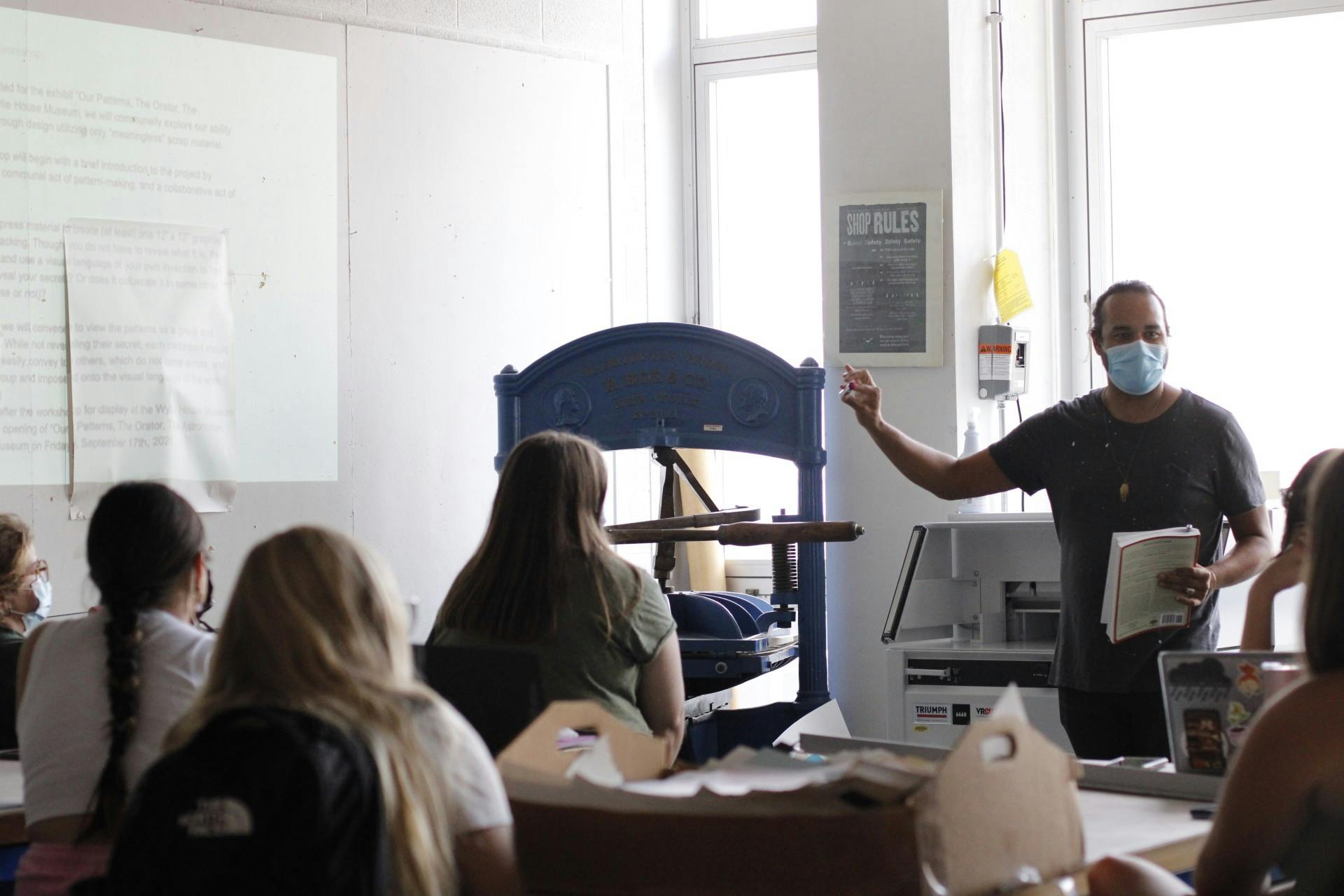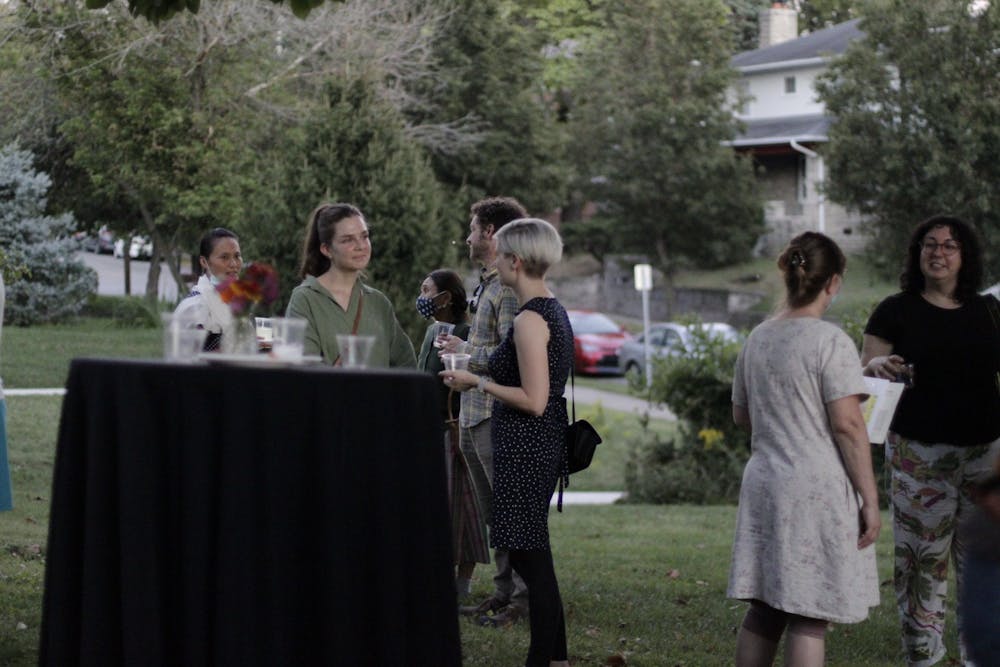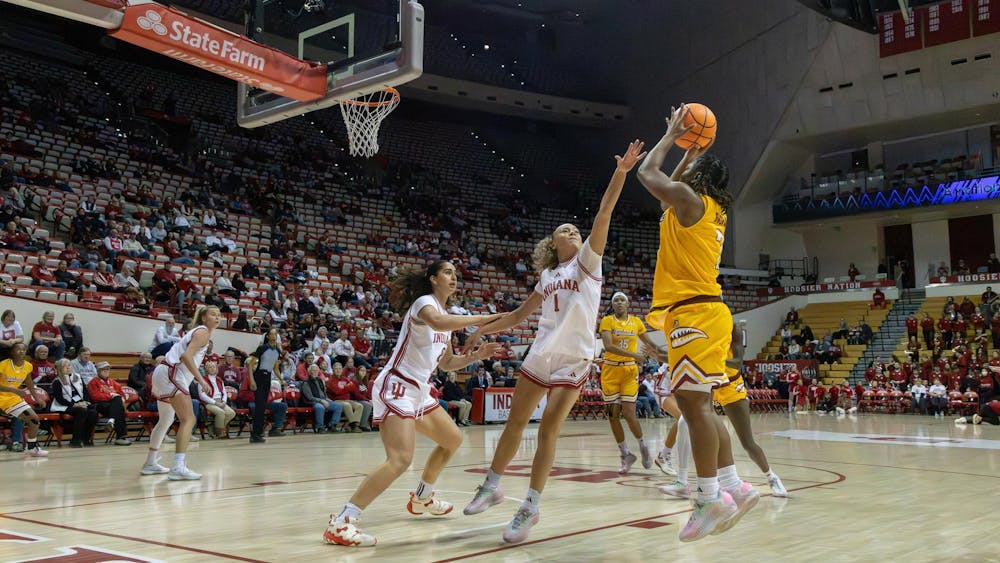Artfully-crafted patterns, lit by hidden projectors, stretch across the 19th-century wallpaper of the Wylie House Museum. A visitor climbs the groaning steps, their shadow dappling across the projection behind it. On the floor above, the geometric shapes of light on the wall parallel those on a quilt below – dragging the history of the house into the spotlight.
“Our Patterns, the Orator, the Astrologer and the Poet” is an art exhibit by Natan Diacon-Furtado featuring 12 patterns based on the house’s quilt collection. Projected on the walls of the Wylie House Museum, Diacon-Furtado said the patterns represent three of the house’s former residents: Sarah Parke Morrison, Harvey Young and Elizabeth Breckenridge. While marginalized in their time because of their race or gender, they were written about enough for Diacon-Furtado to explore their lives and personalities through art.
“The only reason we have archives of these folks is because they stayed or worked for a period of time at the Wylie House,” Diacon-Furtado said. “It’s not because Indiana University at the time thought they were important enough to keep records of.”
Diacon-Furtado was originally trained as a cultural anthropologist, but he now works as a collaborative artist and designer. He said he’s worked on collaborative pattern projects before, usually with students, with the goal of establishing a visual language. For this project, he said he wanted to work with an archive to collaborate with people across time, telling their stories as they would have wanted them told.
IU’s Institute of Advanced Study’s funding helped him to accomplish his goal. Diacon-Furtado received a Repository Research Fellowship, allowing him to explore the Wylie House’s textile collection. Fellowships were moved online during the pandemic, meaning Diacon-Furtado could dive into the museum’s entire digital archive from his home in New Orleans .
“It’s kind of an amazing feat to have most of your archives completely digital, so that’s what makes it possible,” Diacon-Furtado said.
Diacon-Furtado focused primarily on pioneers forced out of IU during their time. Sarah Parke Morrison was the first woman to attend, graduate and teach at IU before male students’ sexist acts, such as refusal to participate in class and slander in a fraternity newspaper, forced her to leave. Harvey Young was the first Black man to attend IU, but he left without a degree to become a schoolteacher. The exception is Elizabeth Breckenridge, a Black woman who lived and worked as a domestic servant at Wylie House for over 50 years, including the time the other two spent at the home.
“People who are the first of whatever to attend a university or an institution or even just people who are otherized in society attending an institution –– that’s still happening every day up through today,” Diacon-Furtado said.
Collaboration with these figures was important to Diacon-Furtado, he said, because he wanted visitors to spend the same amount of time with them that he had while researching.
“I think of them as collaborations because, as an artist in this sense, I’m not trying to put my own personal imprint on it above their history,” Diacon-Furtado said. “I’m not trying to interpret their history for them.”
The exhibit demands we consider the lives of these people, the marginalization they faced, and the space we create for firsts in our present day, Diacon-Furtado said.

Exhibit attendee Lucas Beam participated in a guest class Diacon-Furtado taught on Tuesday where the artist spoke about letting creativity flow and conveying meaning through art. Walking through the Wylie House, he called the art beautiful, and agrees these stories need to be told.
“It’s Natan really trying to show the history of people who are frequently forgotten by continuing these conversations and understanding all the firsts that are happening and how many people Indiana University has silenced, maybe not even intentionally,” Beam said.
The Wylie House Museum wants to share these stories widely, said Carey Champion, associate librarian and director of the museum.
“I hope that, through Natan’s art, they get a sense of these three people who passed through the home and an understanding that Wylie House Museum wants to be sharing those stories of people who are more marginalized and lesser known,” Champion said.






